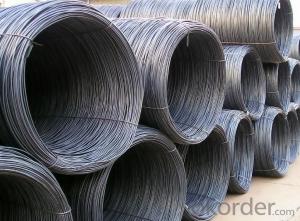Reinforced steel, often referred to as rebar, is the unsung hero of modern construction. It’s the backbone that gives concrete its strength and durability. Imagine a world without reinforced steel; our skyscrapers, bridges, and even our homes would be a lot less sturdy. But what exactly is reinforced steel, and how does it work its magic in concrete? Let’s dive into the fascinating world of this strengthening element.
The Unsung Hero: Reinforced Steel
Reinforced steel is made from carbon steel, which is alloyed with a small percentage of carbon to increase its strength. This steel is then fabricated into bars of various shapes and sizes, ready to be embedded in concrete. The reason for using steel in concrete is quite simple: steel and concrete have complementary properties. While concrete is excellent at compressing, it’s not so great at stretching or bending. Steel, on the other hand, is fantastic at handling tension and bending forces. Together, they create a powerhouse of strength.
How It All Comes Together
When we talk about reinforced concrete, we’re talking about a composite material that combines the best of both worlds. The process begins with the steel being embedded in the formwork before the concrete is poured. As the concrete sets, it bonds with the steel, creating a strong, unified structure. This bond is crucial, as it ensures that the two materials work together to distribute loads and resist deformation.
The Role of Admixtures
To enhance the bond between steel and concrete, admixtures are often used. These are substances added to the concrete mix to improve its workability, durability, and bonding properties. Admixtures can be anything from air-entraining agents to superplasticizers, each serving a specific purpose in the concrete’s performance.
The Importance of Corrosion Protection
One of the main concerns with using steel in concrete is the risk of corrosion. When steel corrodes, it can lead to the expansion of the material, causing cracks and eventually weakening the structure. To prevent this, various methods are employed, such as using corrosion-resistant steel or applying protective coatings. Additionally, proper concrete cover and good construction practices can help minimize the risk of corrosion.
The Art of Reinforcement Design
Designing the reinforcement for a structure is both an art and a science. Engineers must consider the loads that the structure will need to support, as well as the environmental conditions it will be exposed to. This involves careful calculations and the use of sophisticated software to ensure that the right amount and type of reinforcement is used.
The Future of Reinforced Steel in Concrete
As we look to the future, the use of reinforced steel in concrete is only set to grow. With advancements in materials science and engineering, we can expect to see even stronger and more durable reinforced concrete structures. Innovations such as self-healing concrete and the use of recycled materials are just the tip of the iceberg.
The Emotional Connection to Reinforced Steel
For many, reinforced steel isn’t just a material; it’s a symbol of human ingenuity and our ability to create structures that stand the test of time. It’s the foundation of our cities and the framework of our lives. When you look at a building or a bridge, take a moment to appreciate the strength and resilience that reinforced steel provides.
Conclusion
Reinforced steel for concrete is more than just a strengthening element; it’s a testament to the power of collaboration between two materials. It’s a reminder that when we work together, we can achieve great things. So next time you walk past a concrete structure, remember the steel inside, silently doing its job, keeping us safe and secure.

